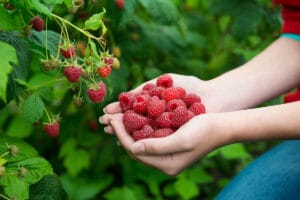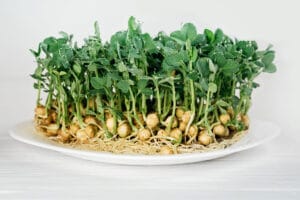Your vegetable garden was very productive this year… a little too much so. Everyone in your family has made considerable efforts to increase their consumption of fruits and vegetables, but nothing helps: the vegetable drawer is always overflowing and the garden is still full! Help! There’s nothing worse than food waste, especially when you’ve put so much effort into planting and maintaining your garden. Here are some ideas to help you preserve your vegetables.
Freeze
Apart from lettuce and onions, all vegetables can be frozen and then used in soups or stews, steamed and served as a side dish, pureed, etc. Before freezing vegetables, blanch them in boiling water and then dry them completely. Spread them out on a plate to freeze before transferring them to a bag of airtight container. This way, the pieces won’t stick together and form a large block of ice.
You can also freeze your berries the same way, skipping the blanching step. Even herbs can be frozen. You can chop them up, put them in containers and put them in the freezer or put them in ice cubes, cover them with water and freeze them.
Canning
When vegetables are plentiful, they can be canned. Tomatoes, of course – diced, whole, in sauce, etc. – but also beets, beans, carrots, cauliflower, corn and many others. Be sure to sterilize your jars to prevent bacteria from spoiling your recipes. In a pot of boiling water, in the pressure canner, in the oven or even in the microwave, there are several effective techniques for canning your vegetables.
Pickling
If you like vinegar, you can pickle your vegetables. Add herbs and spices to vary the flavours of your vegetables. Just about anything can be pickled: radishes, cucumbers, peppers, beans, onions… As the jars aren’t sterile, you must keep the marinades in the refrigerator and consume them within one month after putting them in the jar. They do not freeze.
Dehydrate
With a commercial dehydrator or in the oven, you can dry fruits and vegetables to use them in your recipes or to eat them as chips. Dried herbs also keep very well and enhance the taste of all your dishes.
For your herbs
If you have lots of fresh herbs to go through, you can make pesto. And not just with basil: parsley, cilantro, oregano, tarragon and even arugula and spinach. Combine your favorites. Pesto can be frozen and kept in the fridge for a few weeks. You can also infuse the herbs in oil to flavor it. Add your hot peppers to add a touch of spice to your pizzas, pastas or salads.
With all these tips, there’s no reason to waste your vegetables and fruits. Find the methods that work best for you and enjoy your good crops all year long.
Bon appétit!







